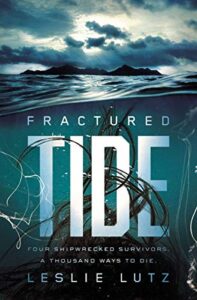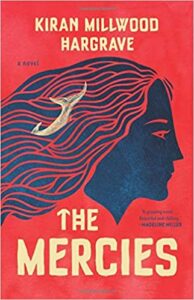

Gemina (The Illuminae Files_02) by Amie Kaufman and Jay Kristoff, illustrated by Marie Lu
Knopf Books for Young Readers, 2016
ISBN-13: 978-0553499155
Available: Hardcover, paperback, Kindle edition, audiobook
Gemina is the sequel to Illuminae. Illuminae is framed by a trial in which a dossier of information is submitted as part of an investigation into a megacorporation’s criminal activity. The dossier begins by telling a story about a commando attack on an illegal civilian mining colony owned by the Wallace Ulyanov Corporation (WUC) on Kerenza IV, a planet out in the middle of nowhere, by a competing megacorporation, BeiTech. A Terran Authority ship, the Alexander, that arrived in response to a distress call, and two other ships, the Hypatia and the Copernicus, escaped with many of the refugees on board. However, their ability to communicate and to travel with any speed was handicapped by damage to the ships, and especially the incredibly complex AI, called AIDAN. When AIDAN was rebooted, its perceptions of what was best for the ships caused serious damage and destruction, and the death of many of the refugees. At the end of Illuminae, the Alexander and the Copernicus have both been destroyed through a combination of a bioweapon Beitech released before the residents of the colony fled and AIDAN’s frequently homicidal choices, and the Lincoln has also been destroyed. The primary characters from that book are teenagers Kady and Ezra. Kady is an anti-authoritarian hacker genius who is able to set up a partnership with AIDAN. Ezra is her ex-boyfriend, who has been drafted as a fighter pilot.
Gemina picks up with Hypatia limping through space toward a jump point, a wormhole that would allow them to get to a jump station, Heimdall, which sits in the midst of a number of jump points and makes transit from one place to another through the jump points faster and easier. They’re desperately hoping that Heimdall is picking up their radio transmissions and coming to the rescue. Unfortunately, a BeiTech spy is embedded in the communications staff at Heimdall, and has been destroying any transmissions, so no one on Heimdall has any idea that any ship is on the way, or even that anything happened on Kerenza IV. A transmission did, however, make it through from the crippled BeiTech ship, the Lincoln, alerting top executive Leanne Frobisher that BeiTech’s coverup isn’t as complete as she thought it was.
On Heimdall, Hanna Donnelly, the station commander’s daughter, is chatting up her drug dealer , Nik Malikov, while she prepares to make a splash at a Terra Day celebration she will be attending with her handsome, romantic, boyfriend, Jackson. Hanna may look like a fashionable, spoiled, and very privileged girl, but she’s also highly trained in strategy and martial arts (this apparently is how she spends quality time with her dad). Nik, in the meantime, has also been contacted by someone who wants to move a box of contraband into the station. A member of a family famous for their criminal dealings, he lives on the station without documentation so he can’t be easily tracked. The box arrives late, and Nik leaves to sell Hanna “dust,” the designer drug of the moment, so he’s not there when the box opens to reveal a heavily armed commando team hired by BeiTech to prevent the escape of the Hypatia, that starts its reign of terror on the station by killing almost every other member of Nik’s family.
The commandos storm the atrium, where the majority of Heimdall’s residents are celebrating Terra Day, and kill Hanna’s father. Hanna, waiting for Nik to show up, is saved because he’s late getting to her. Of all the people on Heimdall, they are the only two who have the combined luck and skill to combat the killers that have overtaken the station. It’s a deadly game of cat-and-mouse, complicated by the emotions, perceptions, and decisions of people who are not what they seem. There are stone-cold killers, spies, hackers, lovers, literal bloodsucking monsters (lanima, the source of “dust”), and evil corporate executives; there are betrayals, grief, confusion, anger, and fear; there is weird science, love, and hope in the face of horror.
Hanna and Nik, along with Nik’s hacker cousin Ella, discover the plan to eliminate the Hypatia and eventually the Heimdall, get through to the Hypatia, and with the help of Kady Grant and the remains of AIDAN on the Hypatia, manage to save many lives on the Heimdall, nearly destroy reality, save the universe, and escape through the wormhole to rendezvous with the Hypatia. Unfortunately, the wormhole is destroyed in the process, leaving the survivors of both Kerenza IV and the Heimdall far from home, and with limited options.
As with the first book, Gemina’s storytelling is unconventional, involving screenshots of messages and chats, emails, transcripts of video clips (with commentary) text designed as part of illustrations, showing movement or space, soliloquies by AIDAN, and artwork from Hanna’s journal (the journal artwork was created by Marie Lu) Page design is such an essential part of the way the book is written that I don’t think the story could be told effectively in a more traditional way. I highly recommend reading a hardcover edition: paperback won’t have the same detail and Kindle and audiobook cannot possibly do this justice.
Gemina suffers from an issue that affects many “middle” books in trilogies: while it doesn’t end in the middle of a sentence, it does end rather suddenly, leaving the reader with an unsatisfactory feeling of “wait, what happens next?” It’s also a very different book from Illuminae, much more of a horror/science fiction thriller. Hanna, Nik, and Ella are all very strong characters who developed considerably beyond their original stereotypical presentations during the story, and they’re up against the commandos, with few adults to monitor them, instead of the considerably more operatic first book with its mass murders, evacuations, space battles, military crackdowns, bioweapon-infected cannibals, and homicidal AI, in which Kady and Ezra are very much treated as teens in need of supervision. Yet the ending seemed anticlimactic, more written to lead into the third book than to finish the second. I enjoyed meeting Hanna, Nik, and especially snarky, tough, Ella (it’s great to see a disabled character portrayed as multidimensional and valued as a person) and am interested in seeing how the interactions of the people from the Heimdall and those of Kerenza IV play out in volume 3. Recommended.







Follow Us!